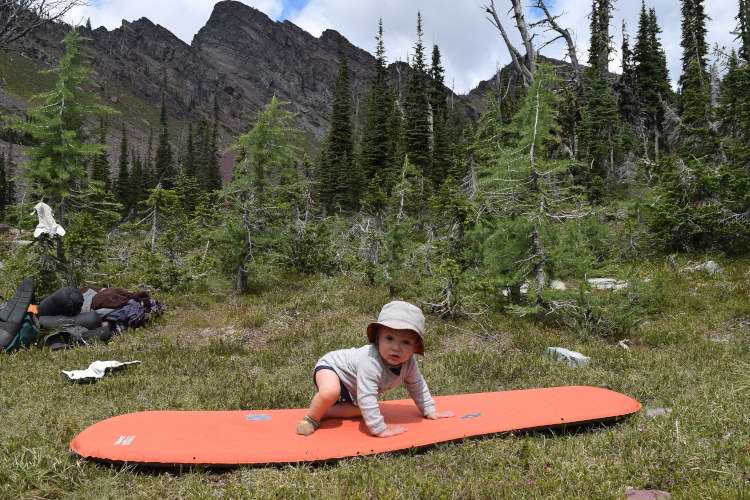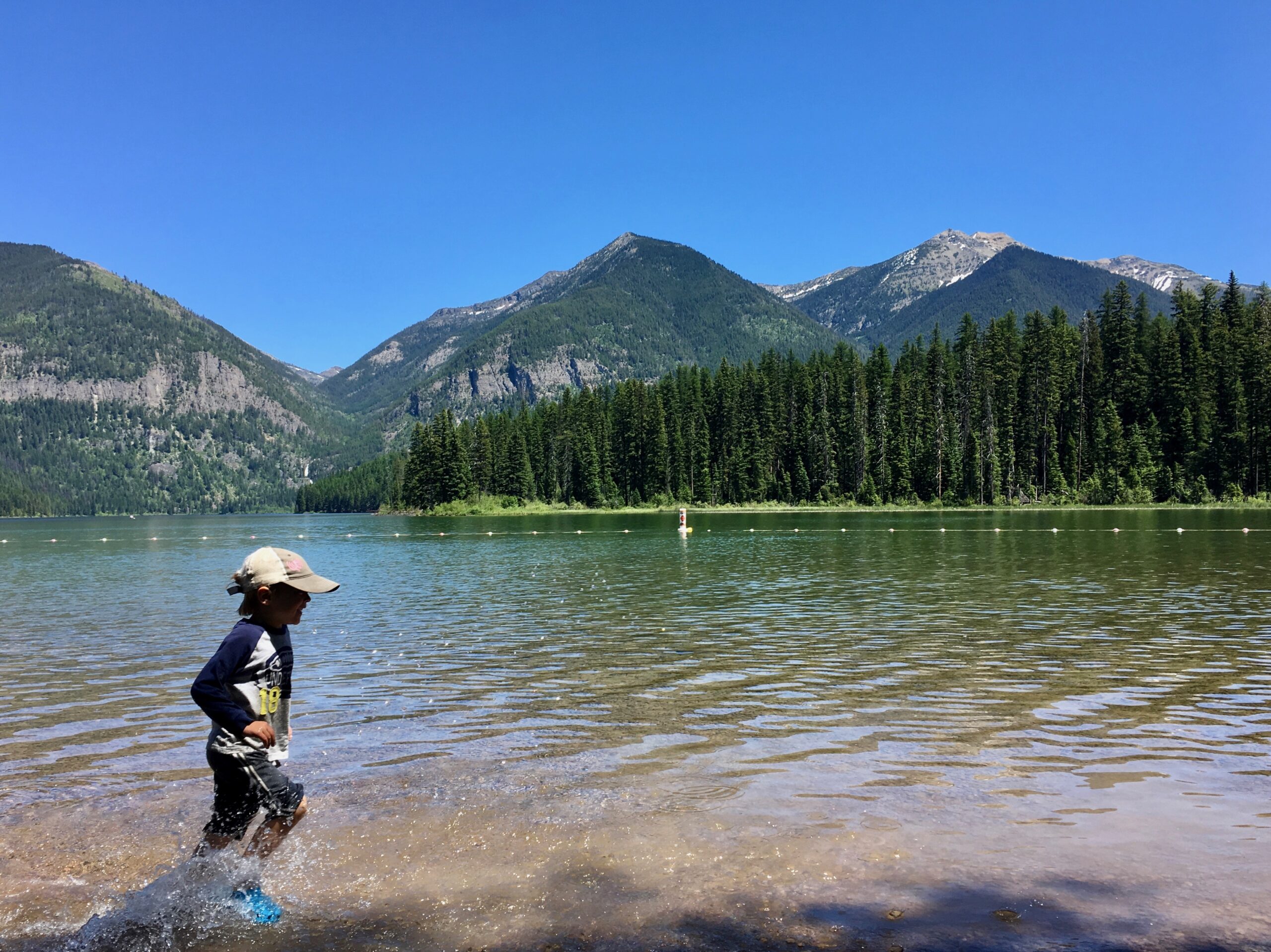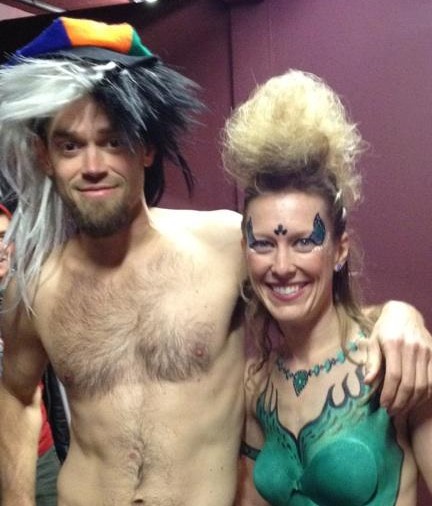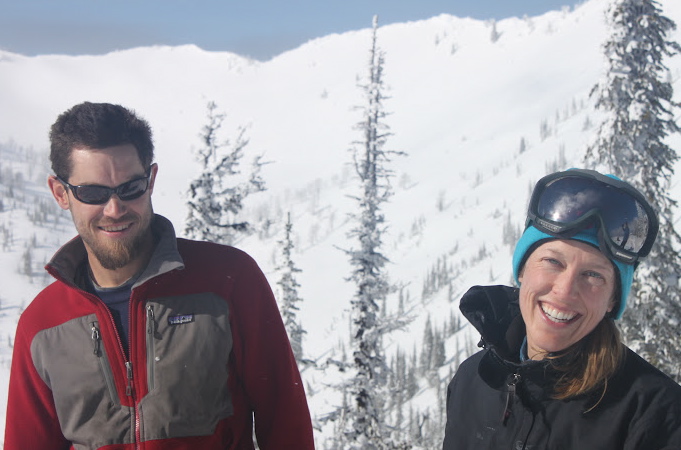Backpacking with kids is worth the whining
5 reasons to spend a weekend in the wilderness with your children
Photos (C) Rob Roberts
“You sure have a high misery tolerance,” my friend Linsey remarks cheerfully, as she passes us on the trail. I gaze after her wistfully, coveting her easy pace as Talon screams and writhes in the pack on my back.
It’s a Friday evening in mid-July, and we’re hiking straight up the Swan Mountains to camp near some backcountry lakes for the weekend. Even though it’s mid-July, the temperature is plummeting toward freezing, and the threatening grey clouds and howling wind aren’t helping my frame of mind. Quite possibly nothing would help my frame of mind, though, since bringing a baby on a backpacking trip does indeed entail a certain level of misery.

Every time Rob and I start down a trail–with Talon on my back, and 50 pounds of camping gear on his–I vow within five minutes to never do it again. Somehow, we do it the next weekend anyway. Are we gluttons for punishment? Obviously.
We stubbornly refuse to acknowledge that our lives might not be as adventurous as before. But the real reason we keep hitting the trails, misery and all, is because by the end of the weekend in the woods, we’re both glad we got out in the wilderness.

Backpacking with a baby is hard. First there’s the whining, and kicking, and hair-pulling. Then there’s the poopy diapers–do you haul the dirty ones out? Use cloth diapers and bury the poo? (It’s a lose-lose situation either way.) Once you get to camp, it’s only slightly easier. You have to manage the wee babe for sunburn and bugs, and constantly corral him from crawling off boulders or tottering into the cook stove.
The hardest part, though, is actually the non-stop, nagging voice in my head: “This used to be fun. What if backpacking is never fun again? What if life is never fun again?” Single-track trail often breeds existential crisis–or at least walking alone for long periods adds fuel to the fire. I find, though, that if I walk for long enough, my footsteps eventually: 1) rock Talon to sleep, and 2) bring my thoughts (now influenced by the peaceful quiet of a sleeping baby) full circle to: “Life is awesome, and backpacking is the bomb.”

This cycle of misery and joy repeats more often, and with bigger peaks and valleys, than a typical day at home. Playing in the tent with a giggling baby is exhilarating; taking the 87th rock out of Talon’s mouth is exhausting. Catching a trout in the lake is a triumph; trying to cook it while Talon tips toward the flames is terrifying.
We’ve taken three backpacking trips with Talon this summer to three different mountain ranges in Montana. All in all, the impetus for our continued expeditions boils down to the fact that we love immersing ourselves in the wilderness, and enjoy introducing Talon to the magic of lakes, peaks, and trails, too.

Here’s why I think it’s worth packing a baby into the woods:
1. You’ll have stories to tell. Regale your friends and family with exaggerated tales of your exploits and mis-adventures in the woods: “And then Talon took a header down the talus field toward the lake! But we caught him before that hawk swooped down to try and grab him.” They’ll think you’re insane, of course, but that’s half the fun.
2. Car camping becomes a walk in the park. Pitching a tent without having to carry it and your kid uphill several miles feels liberating. Plus, you can bring beer, games, and a big roomy tent instead of the two-man-that’s-really-a-one-man setup (which puts new meaning into the word “snuggle”).
3. It makes your home seem like a dream come true. Returning to the house lends a new appreciation for luxuries like running water, cribs, chairs, and countertops above your baby’s reach. The rooms that might have felt claustrophobic all week before your trip suddenly seem like lovely, comfy, safe zones for you and babe.
4. You get alone time surrounded by beauty. Once the baby falls asleep on your back (or switches to your partner’s back), the quiet reverberates ten-fold in the absence of his babble. The leaves look sharper, the air feels crisper, the peaks seem closer. You can breathe more deeply and think more clearly than ever before.
5. It builds endurance. Backpacking with a baby is a physical and mental strength-training exercise. Your muscle tone will improve, as will your reservoir of patience. As your tolerance for misery increases, so does your capacity for joy.
So, there you have it. Let me know how it goes if you brave the trail with a wee one on your back




























